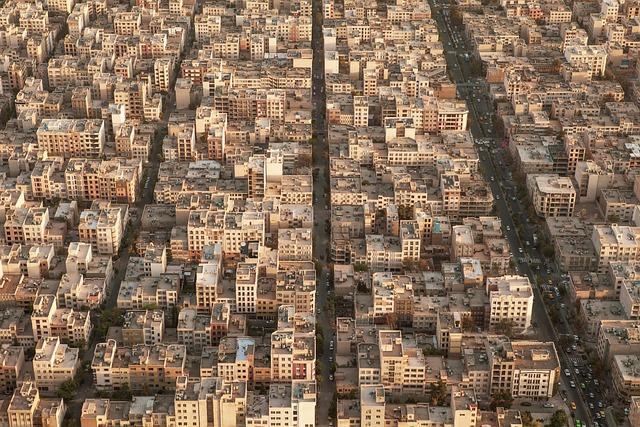In a stark development reflecting the ongoing challenges of resource management, Tehran residents are grappling with sudden water cuts each night as the city implements unexpected rationing measures. As the Iranian capital faces mounting pressures from a prolonged drought and infrastructural inefficiencies, citizens find themselves navigating the complexities of daily life amidst these abrupt interruptions to a vital resource. With little prior notice from authorities, the rationing has raised concerns over public health, sanitation, and the broader implications for urban living in one of the region’s largest cities. In this article, we explore the causes behind the water shortages, the public’s response, and the potential long-term impacts on the capital and its inhabitants.
Tehran’s Unexpected Water Rationing: A Deep Dive into the Crisis and Its Causes
Tehran’s recent shift to nightly water rations has caught residents off guard, leading to widespread concern about the underlying causes of this sudden decision. Many households are now facing the stark reality of having their water supply cut without prior warning, prompting cities across Iran to adapt to this unexpected crisis. Citizens are left scrambling to manage their daily needs, ranging from cooking and bathing to maintaining hygiene. The government attributes this drastic move to drought conditions and mismanagement of water resources, highlighting a combination of long-term issues that have culminated in this crisis.
The situation is further exacerbated by the following factors:
- Population Growth: Tehran’s rapid urbanization has led to an increasing demand for water that surpasses supply capabilities.
- Climate Change: Irregular rainfall patterns linked to climate change have contributed to dwindling water reserves.
- Infrastructure Issues: Aging water infrastructure has led to significant losses in distribution efficiency, further straining available resources.
| Factor | Impact |
|---|---|
| Population Growth | Increased demand for water |
| Climate Change | Reduced water availability |
| Infrastructure Issues | Water loss in distribution |
Impact on Residents: How Nightly Water Cuts Are Disrupting Daily Life in the Capital
The capital’s residents have found their nightly routines thrown into disarray as unexpected water rationing begins to take a toll on household activities. With water cuts implemented without prior notice, families are grappling with challenges that disrupt their basic day-to-day living. Reports indicate that the unanticipated lack of water has led to a surge in frustration among citizens as they struggle to manage essential tasks such as:
- Cooking: Many have been unable to prepare meals, leading to increased reliance on takeout and processed foods.
- Hygiene: The reduced water supply has hampered personal cleanliness and proper sanitation.
- Household chores: Laundry and cleaning routines have been significantly impacted.
In response to these disruptions, residents have resorted to creative solutions, such as storing water in jars and containers during the limited hours of supply. Some neighborhoods have even organized community efforts to monitor water availability and share resources among themselves. The situation has underscored the urgency for a more sustainable water management strategy in Tehran. A recent survey of local residents revealed the severity of the crisis:
| Concern | Percentage of Residents Affected |
|---|---|
| Food Preparation Issues | 65% |
| Lack of Hygiene Products | 72% |
| Increased Stress Levels | 58% |
Solutions for Sustainable Water Management: Experts Weigh In on Long-term Strategies for Tehran
The ongoing water shortages in Tehran have prompted urgent calls for sustainable management strategies from experts across various sectors. As citizens brace for unannounced nightly cuts, specialists emphasize the need for a multi-faceted approach that incorporates both conservation and technological innovation. Key strategies proposed include:
- Implementing advanced water recycling systems.
- Investing in rainwater harvesting infrastructure.
- Increasing public awareness campaigns about water conservation.
- Utilizing smart technology for efficient water distribution.
Moreover, collaborative governance is seen as essential in creating a resilient water management framework. Experts advocate for partnerships between the government, local communities, and private sectors to enhance resource allocation and ensure sustainable practices. A potential framework could focus on the following areas:
| Strategic Area | Actions |
|---|---|
| Policy Development | Establish regulations promoting sustainable water use. |
| Funding Initiatives | Secure financing for water conservation projects. |
| Community Engagement | Involve residents in decision-making processes. |
Insights and Conclusions
As Tehran grapples with the escalating challenge of water scarcity, the sudden implementation of nightly water cuts underscores the urgent need for sustainable solutions. Residents are left to navigate the unpredictability of their water supply, forced to adapt to rationing measures that come without prior notice. This crisis not only highlights the pressing issues of climate change and resource management in Iran but also raises questions about the government’s preparedness and response strategies. As the situation evolves, citizens and officials alike face the daunting task of addressing both immediate needs and long-term reforms to protect Tehran’s vital water resources. The coming days and weeks will be critical as Tehran seeks to manage this essential resource more effectively amid increasing demands and dwindling supplies.
